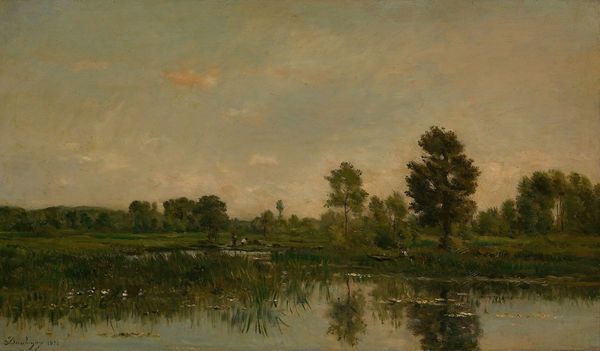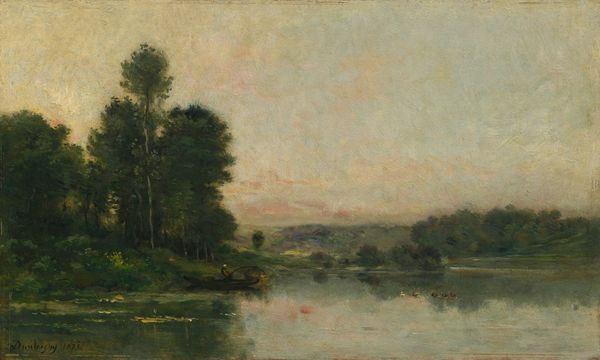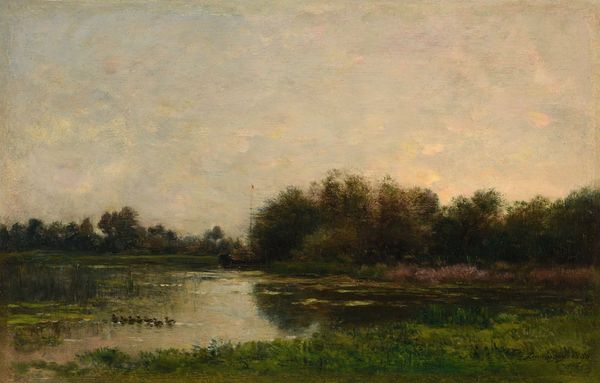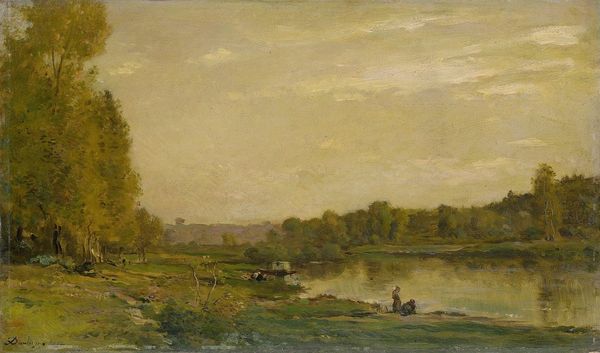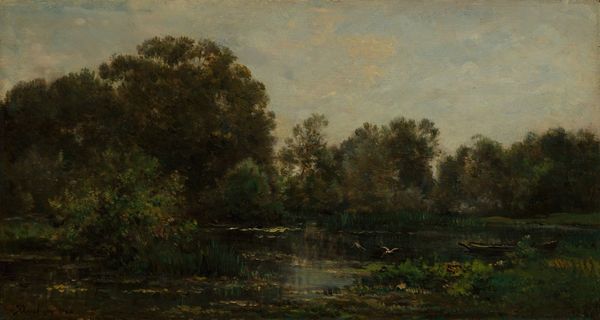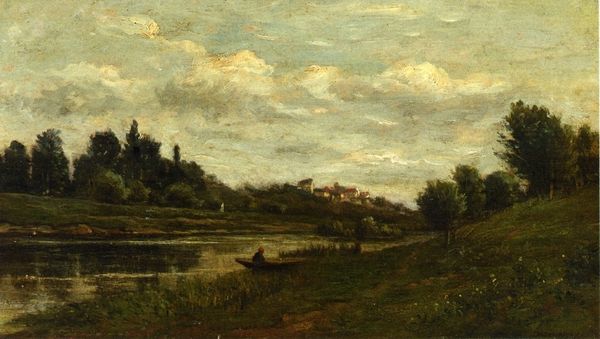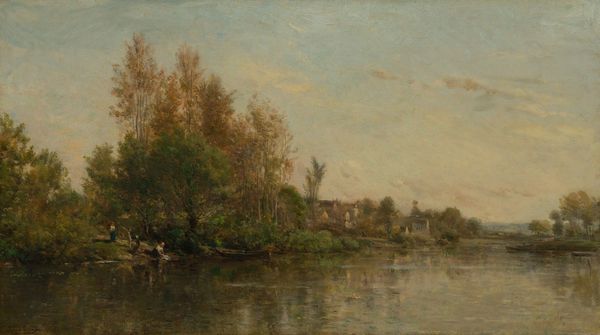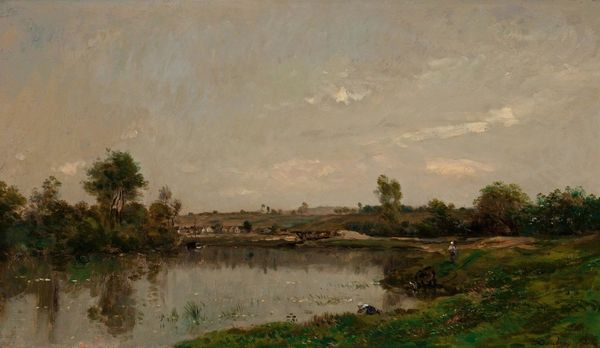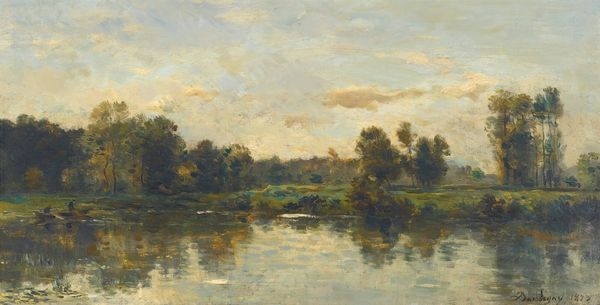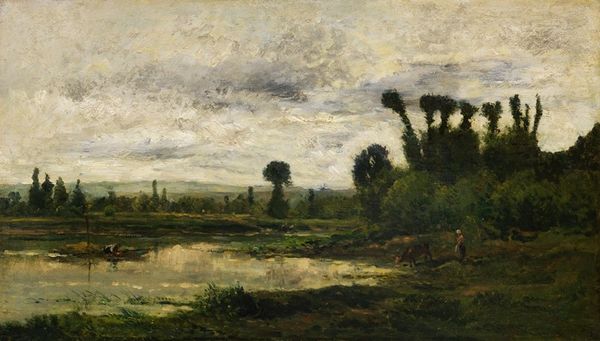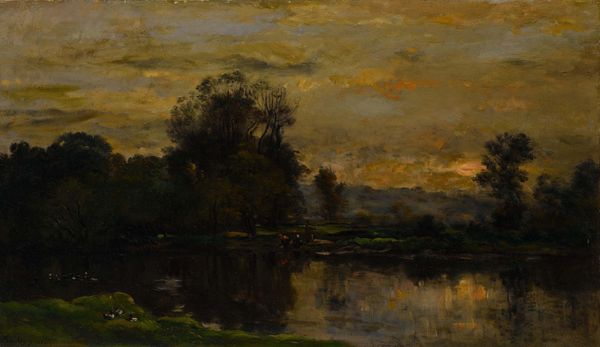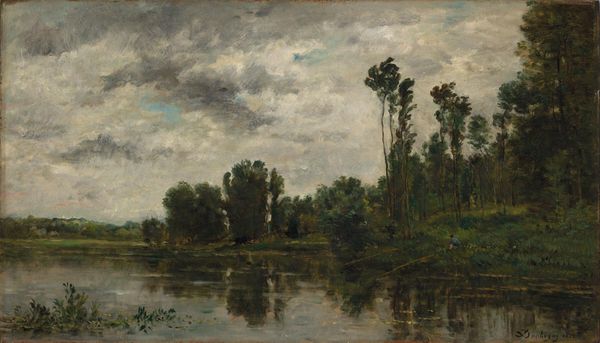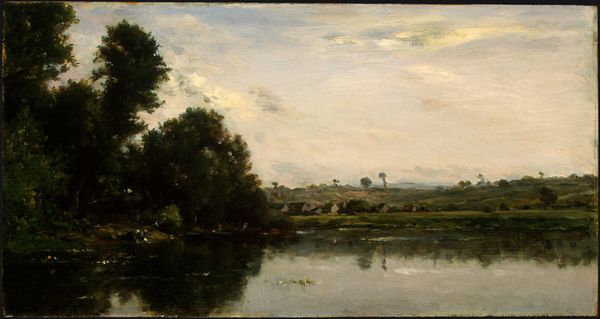
Copyright: Public Domain: Artvee
Curator: This tranquil landscape draws me in immediately. There's a certain peace to it. Editor: I agree. Let's orient our listeners. We are looking at Charles-François Daubigny's oil on canvas from 1877, titled "The Painter’s Barge at the Ile de Vaux on the Oise River". Daubigny, of course, was a critical figure in the development of Impressionism, painting en plein air to capture the fleeting effects of light. Curator: Absolutely. This image, depicting the artist’s studio barge, goes beyond just landscape. I see it as an illustration of how one creates; the barge itself becoming a symbol of artistic production and autonomy, a floating workspace free from societal constraints. It really speaks to themes of mobility and self-determination, ideas linked to nineteenth century artistic identity. Editor: Fascinating take. Certainly, we know the Impressionists broke free from academic strictures to portray everyday life and the natural world directly. Daubigny’s focus on capturing the changing atmosphere and light—the pinkish glow near the horizon particularly—marks the piece as an example of plein air painting, a key stylistic device of impressionism. I'm especially drawn to the water’s reflective surface—how light transforms mundane scenery into moments of ephemeral beauty. The role of state patronage at this time influenced which works were deemed important, or “made it to shore,” so to speak. Curator: It's impossible to separate artistic freedom from political liberty during this period. By painting the very site from which he produced art, I would argue that Daubigny created not just a record of a time, but also a symbol of the artist as free agent. Where does Daubigny’s practice situate him politically? In opposition? Is he just representing access to the world by a privileged class? Editor: Daubigny's work, while aesthetically pleasing, was indeed politically situated within larger art-historical trends shaped by salons, exhibitions, and societal expectations of what constituted "art," and who deserved to be an artist. Perhaps what strikes me most is how Daubigny challenged the status quo by embracing landscapes and the direct study of nature rather than adhering to academic conventions. Curator: I appreciate how considering the social and historical conditions around the painting only enhance our awareness of the aesthetic choices. What appears on the surface to be placid tells us that the production of art and cultural value exists within complex political, economic, and interpersonal systems. Editor: Precisely. Daubigny's "The Painter’s Barge," reminds us that the story of art isn't just about individual genius, it’s a conversation across history and society, made accessible to an ever-broadening audience.
Comments
No comments
Be the first to comment and join the conversation on the ultimate creative platform.

